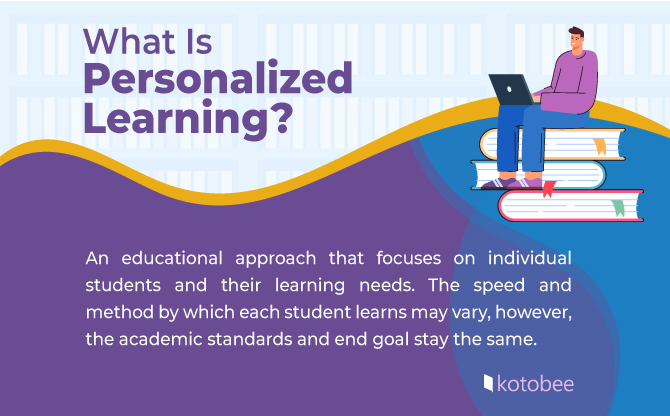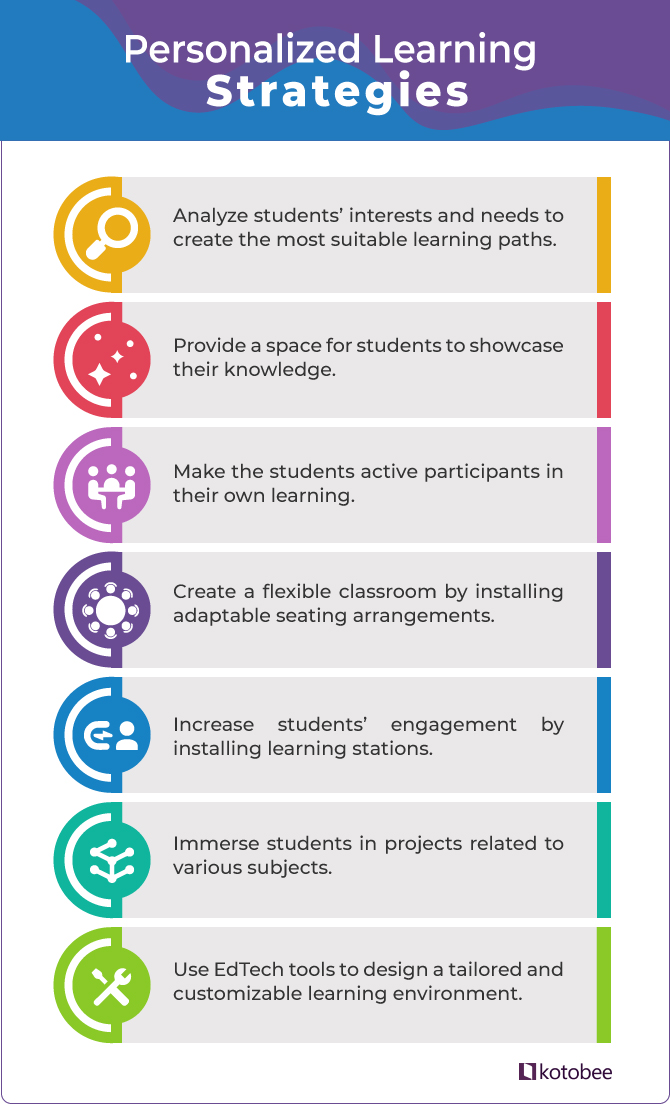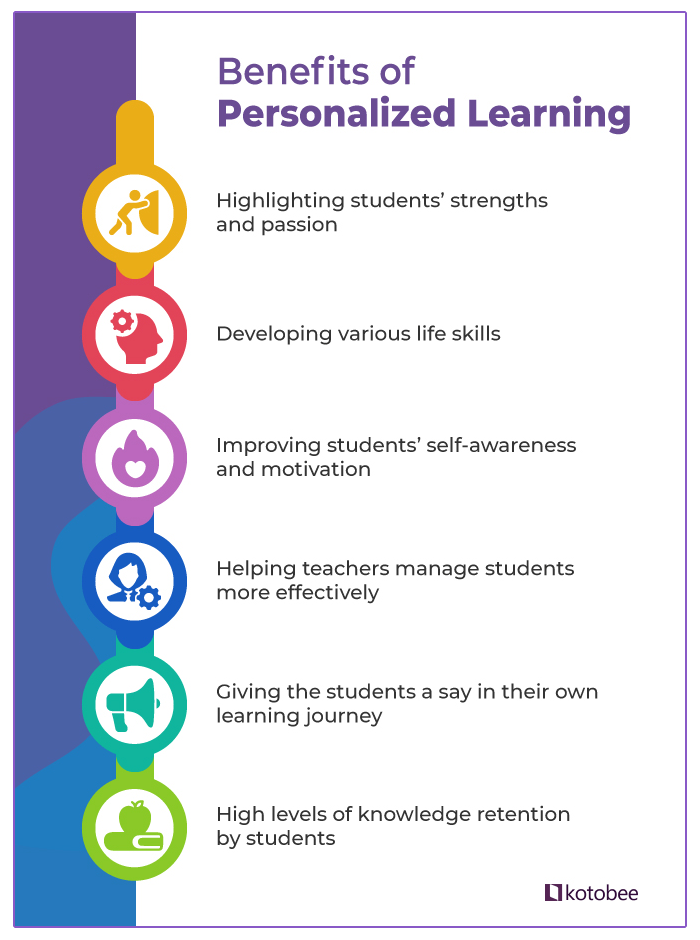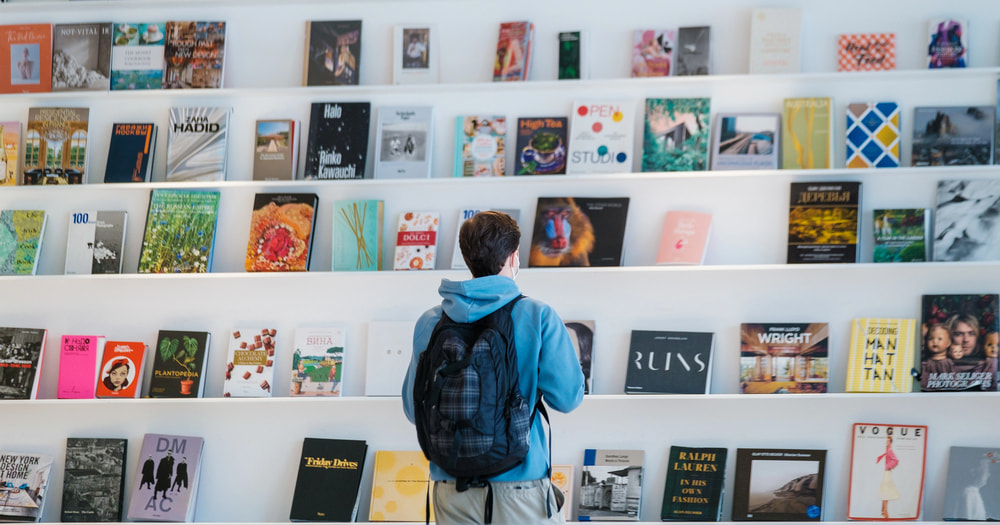Personalized Learning: What Is It and Is it Feasible?
Most teachers have come across the faces of overwhelmed students at the back of their classrooms. And although it’s unfair that such students should struggle in silence, most traditional classroom environments make it impractical for teachers to pay attention to each individual learner.
In an effort to remedy such faults, more schools have begun to adopt a nuanced approach to learning—or what is now referred to as “personalized learning”. Nevertheless, because of its broad terminology, it has been the subject of much debate, starting with the basic question: what exactly does it mean for learning to be personalized?
This article aims to give you an overview of personalized learning: its different models and strategies, the common misconceptions surrounding it, and the benefits of adopting it in the classroom.

What Is Personalized Learning?
Personalized learning is an educational approach that focuses on the learning needs of each individual student; that’s why it’s also referred to as “student-centered” learning. Although the speed and method by which each student learns may vary, the academic standards and end goal stay the same.
Since its aim is to address students’ varying needs, aspirations, and abilities, a good personalized learning program should be flexible. It should also be able to suit all types of schools and students.
This flexibility does not imply that personalized learning has no structure; at its core, it should aim to place the student at the heart of the learning process by:
- Employing highly trained teachers who provide students the opportunity to direct their own learning,
- Offering flexible learning environments that are not restricted to the traditional classroom, and
- Using technology and data analytics to pinpoint students’ strengths and interests. This allows educators to provide more inspiring and engaging content.

What Are the Different Models of Personalized Learning?
Below are some of the common models of personalized learning. It is worth noting that because every classroom is different, educators often end up utilizing a combination of these models, depending on the subject taught and the students’ needs.
Learner Profiles
Some schools use what is known as learner profiles, whereby each student is assigned a unique profile comprising his/her data, including their skills, strengths, and how they learn. This enables teachers to better understand students’ interests, passions, strengths, and needs.
What makes learner profiles an effective personalized learning model is that they offer highly detailed and frequent updates. These can then be accessed by the school, the student, and the parents. In other words, they don’t merely document whether a student is passing or failing. Instead, they help teachers pick up on early warning signs if a student isn’t reaching his/her potential.
Personalized Learning Paths
Students and teachers collaborate to design a unique learning path for each individual student, one that is based on his/her interests, strengths, and previous experience.
This means that each learning path is customized while still covering all the standard concepts and skills students have to learn. What is particularly innovative about this model is that it allows the students to contribute to the creation of their educational path.
Competency-based Progression
Rather than focusing on test results as the main way of assessing students’ progress at school, the competency-based model places importance on skill mastery. Using various teaching methods, students are taught certain skills. And in order to progress, they have to demonstrate a mastery of those skills.
However, showcasing mastery doesn’t depend on tests but rather on more creative ways of assessment that students can help choose. For example, students may come up with ways to demonstrate their mastery of a chemistry concept by utilizing it to cook a meal!
Flipped Instruction
Relying on a mixture of in-person and online learning, flipped instruction aims to change the traditional division of classwork and homework. By adopting this model, teachers place their lessons online and use the in-person class time to have students work on activities together.
Flipped instruction aims to increase students’ engagement with the taught material. Moreover, placing lessons online enables students to access them in a more flexible manner and on their own terms.
How Can Educators Apply Personalized Learning?
So how can we bring to life the theory of personalized learning? Here are some examples of strategies that schools apply when following any of the abovementioned learning models:
- Train teachers to analyze students’ interests and past experiences in order to create the most suitable learning paths.
- Provide students with creative spaces to showcase their knowledge, rather than limiting them to standard assignments and assessments.
- Give students a voice by making them active participants in their own learning. This includes knowing what and how they want to learn, and what kind of goals they want to set for themselves.
- Create flexible classrooms by installing more adaptable seating arrangements. This is important for student-centered instruction as it caters to the varying physical needs of different students.
- Install learning stations (also known as “playlists”) in the classroom. These stations offer more than one type of activity pertaining to the topic being taught. Students then have the option to rotate through the different stations/playlists, which increases their engagement with the material and their classmates.
- Immerse students in projects related to a particular subject to provide them with the opportunity to dig deep into topics, thus mastering different skills while doing so.
- Use Education Technology (EdTech) tools to design a tailored and customizable learning environment.

Where Does EdTech Fit in Personalized Learning Programs?
The previous examples of personalized learning seem great in theory, but how can they be applied in large classrooms? How can we make this type of learning a scalable solution for schools, applicable not just to a handful of students but to hundreds, or even thousands?
This is where EdTech steps in.
Education Technology provides schools with multiple digital solutions that can automate many examples of personalized learning. The most important of which is facilitating the connection between teachers and students.
Whether it’s through video conferencing software or AI technologies, EdTech is how schools can make personalized learning cost-effective, attainable and viable.
Examples of EdTech tools for personalized learning:
- Playlist-creating Tools: Used by teachers to create learning stations, playlist-creating tools such as Gooru and PowerMyLearning enable users to design and deliver their learning playlists, as well as integrate content from different sources.
- Immersive Learning Technologies: Students retain more knowledge of a subject when they delve deep into it. By using immersive learning technologies, such as VR and AR, students can quite literally engage with the material being taught.
- Adaptive Learning Platforms: Employing artificial intelligence and algorithms, adaptive learning platforms—such as Edapp and Knewton—aim to deliver personalized learning resources and activities. By utilizing students’ data, like their interests and previously acquired knowledge, teachers can use these platforms to customize lessons for different types of learners.
- Video Conferencing Software: This type of technology enables students to connect with their teachers in a flexible manner and build connections with other students around the world. This in turn opens up their perspectives and provides them with new outlooks. Examples of popular video conferencing software are Zoom, Google Meet, and Microsoft Teams.
- Learning Management Systems: Learning Management Systems (LMS) are software applications that help educators deliver online learner-centric content. Platforms, such as Moodle and Blackboard, provide students with the means to obtain feedback from teachers and share resources. It also allows them to submit and collaborate on multimedia projects and assignments. They also enable students to keep track of all their work in one place.
What Myths and Misconceptions Surround Personalized Learning?
The fact that personalized learning is viewed differently by various people has naturally given rise to some misconceptions about it. Here are three common myths surrounding personalized learning:
Myth 1: Personalized learning will replace teachers with technology.
Just because personalized learning often utilizes technology certainly does not mean that teachers will be rendered replaceable. Good teachers don’t just impart knowledge to their students; they also offer empathy, motivation, and compassion—all of which form the basis of personalized learning.
Myth 2: Personalized learning isolates students.
Although personalized learning aims to offer a tailored education for students, that doesn’t mean they work in a vacuum. Yes, students have different learning paths, but these paths are not meant to be traversed alone.
In order to reach their customized goals, students must collaborate on different projects with their teachers, classmates, and even with the outside world. They learn about their interests and passions and also get to share them with others.
Myth 3: Personalized learning is for students who want to go slower.
One aspect of personalized learning is enabling students to set their own pace, but that isn’t the main goal. For starters, students don’t set the pace themselves; instead, they work with their teachers to decide together on the pace best-suited for their needs.
Students can set a slower pace for specific elements of a certain course. They can also speed up other elements that they are able to master quickly. Aside from pace-setting, students are also heavily involved in choosing the educational resources they would like to use. They are also able to design goals for themselves and then plan the best way to attain them.
What are the Benefits of Personalized Learning?
Personalized learning is an educational approach that is growing in popularity—and for good reason. Here are some of the benefits associated with this type of learning:
- Creating tailored learning paths means teachers can highlight the strengths and passions of their students. This in turn helps engage students in the learning process.
- By allowing students to become active participants in their education, personalized learning arms them with important life skills–such as decision-making and accountability.
- Through personalized learning, students achieve high levels of motivation and dependability and become more self-aware individuals.
- Personalized learning helps students attain self-advocacy skills by giving them a voice and a say in their own futures.
- By tailoring each student’s learning content based on their interests and prior knowledge, personalized learning can result in high levels of knowledge retention.
- When implemented properly, personalized learning enables teachers to manage their time in a highly efficient manner. By using data analytics to pinpoint what students need, teachers can thus address issues that are specific to certain students.
- Personalized learning is a democratic approach to education. Its inclusive nature allows educators to become learners too. This shifts the traditional teacher-student hierarchy making it more of an equal partnership.

Final Thoughts
The exciting thing about personalized learning is that it’s malleable, meaning that technically there are no set rules for adopting it. Nevertheless, an effective personalized learning program places the student at its heart and provides flexible but targeted instruction. It also employs high-quality teachers who are willing to give students a chance to participate in the creation of their own learning paths.
In other words, successful personalized learning means that teachers will no longer be haunted by the faces of silently struggling students in the back of a classroom, but will instead be met with a sea of engaged and happy learners, each on their own path to the same destination: knowledge.
.
Read More
What Is Virtual Learning and How to Benefit from It?
25 Amazing Digital Tools for the Classroom
7 Engaging Elearning Gamification Strategies
















Monika Grover
March 2, 2023Amazing blog! Great work done there on explaining personalized learning in detail. There are still a lot of taboo and myths around personalized learning and I must say this blog has been a great answer to that. As a mother I know how well personalized tutoring is affecting my child. He feels more connected to me and the teacher which gives him the ultimate benefit of learning at his own pace. Thank you for sharing the insights. Really appreciated!
Kotobee
April 3, 2023Thank you for your kind words, Monica! We’re so glad to hear that you found our blog post helpful and informative. It’s great to hear that personalized tutoring has had a positive impact on your child’s learning experience and that he feels more connected to both you and his teacher. We appreciate you taking the time to share your feedback with us!
slope ball
August 13, 2024This article does a great job of making it clear that personalized learning is not about replacing teachers with technology, isolating students, or just for students who want to slow down.